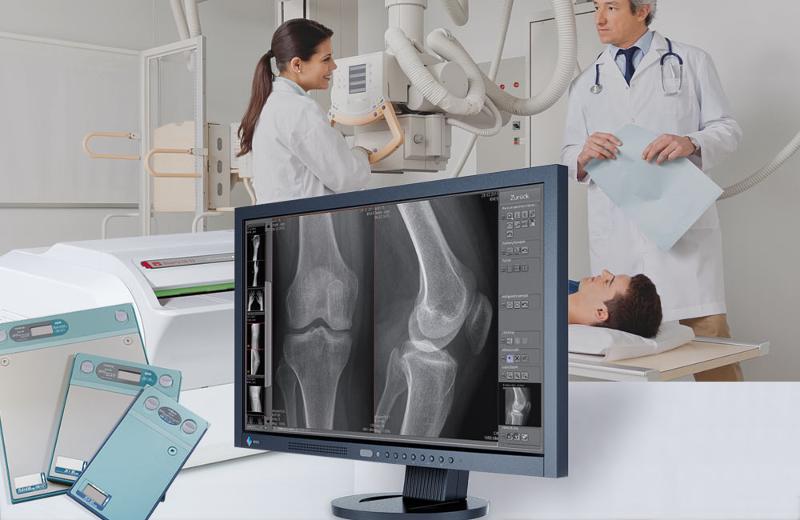Digital X-Ray and Fluoroscopy
With diagnostic X-Ray being the very first and most commonly used form of technique introduced in the field of radiology, there is no harm caused by X-Ray radiations in small amounts. X-Rays allow physicians to perform a painless and quick evaluation, thus, allowing them to detect diseases in the early stages, while improving the recovery time. The most common use of X-Rays is to detect fractures and other abnormalities of bone, joint disease and lung disease.
Using the most modern technology, we readily cater to the needs of those patients who have been ordered by their physician to get themselves examined through general diagnostic exams, which will further help them to identify and diagnose conditions in the chest, bone, sinuses, skull or spine etc.
At ALNOOR, our first priority is to ensure that all of the safety precautions are disclosed with the patients beforehand. In case the patient is pregnant or is in doubt, we make it our duty to ask them before the test is performed, thus reducing the chances of ill-results.
DIGITAL X-RAYS (General Radiology):
X-Ray chest
Abdominal X-Ray
Orthopaedic X-Ray
FLUOROSCOPIC PROCEDURES (Contrast Study Under Direct Supervision):
Barium studies (barium swallow, barium meal, barium follow-through)
Intravenous pyelogram
Hysterosalpingiography
Endoscopic retrograde cholangio-pancreatography (ERCP)
Fistulogram – Loopogram
Sialogram
Urethrogram
T-tube cholangiography etc.

Frequently Asked Question Related Digital X-Ray and Fluoroscopy
What distinguishes fluoroscopy from digital radiography?
Fluoroscopy delivers real-time imagery of dynamic structures, whereas digital radiography obtains a singular, static image.
Is a digital motion X-ray equivalent to fluoroscopy?
Indeed, digital motion X-ray is fundamentally equivalent to fluoroscopy.
Are fluoroscopy and X-rays identical?
Fluoroscopy offers a continuous sequence of images, whereas X-rays produce a singular image.
What is the purpose of digital fluoroscopy?
We use digital fluoroscopy for surgical guidance, gastrointestinal examination, joint function assessment, and blood flow evaluation.
What is the primary application of fluoroscopy?
The primary application of fluoroscopy is to see dynamic physiological processes, including organ movement and fluid flow.
What are the two categories of fluoroscopy?
Fluoroscopy is divided into two primary categories: conventional fluoroscopy and pulsed fluoroscopy.

